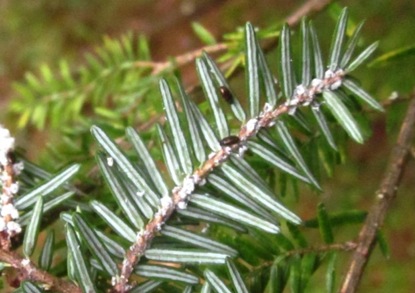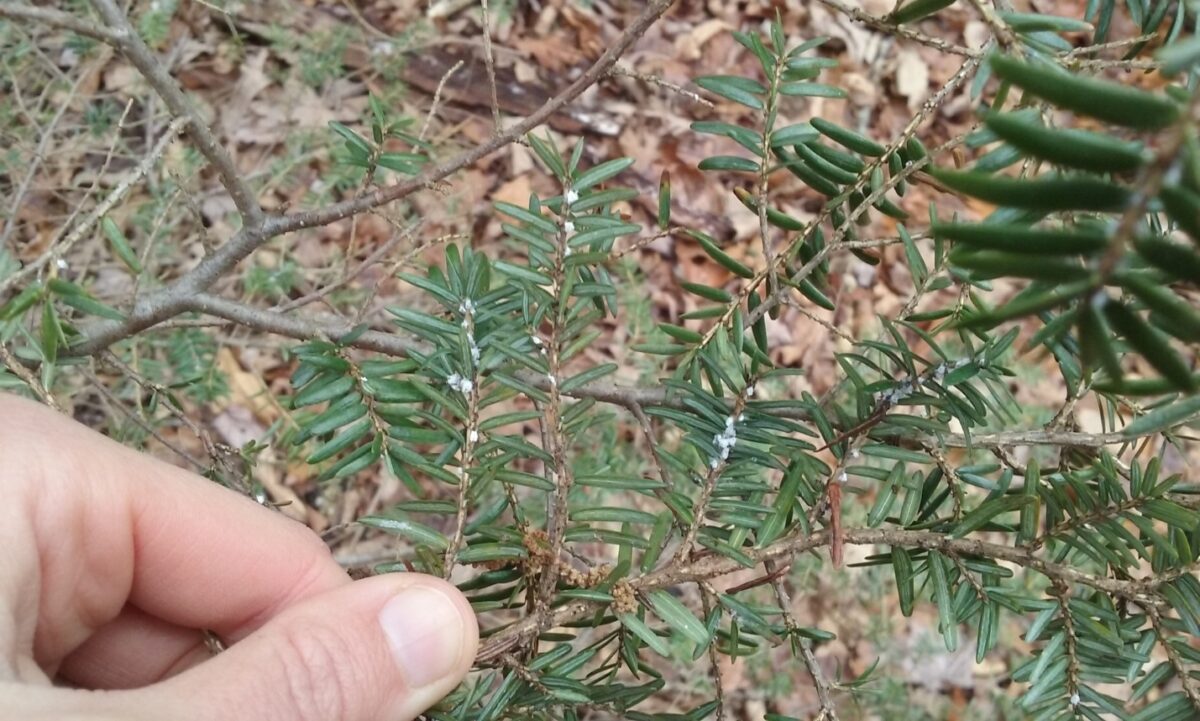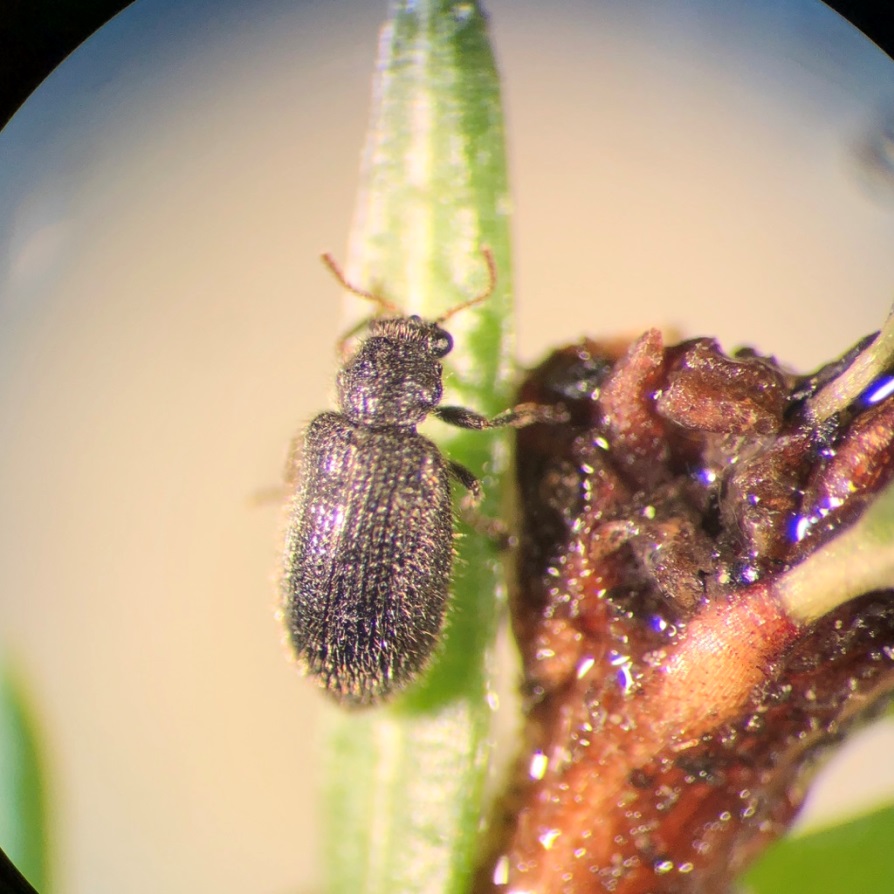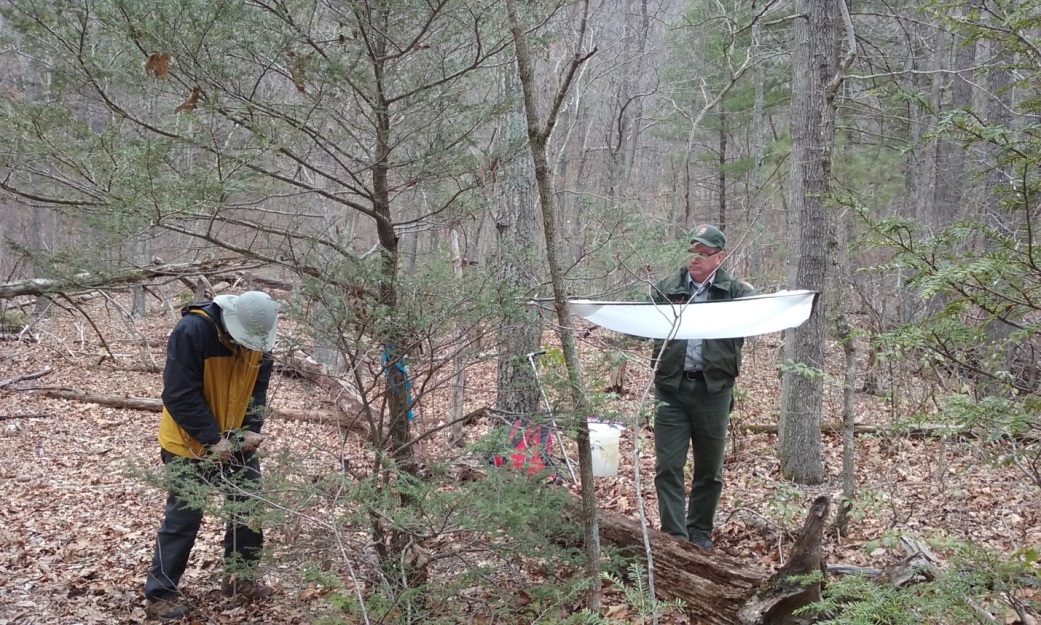Field Notes: Hope for Hemlocks?
April 19, 2018 11:23 am

by VDOF Forest Health Specialist Katlin Mooneyham
Since its introduction to the United States in the 1950s, hemlock woolly adelgid (HWA) has been an unwanted resident in our hemlock forests. Feeding on eastern and Carolina hemlocks, this tiny sap sucking insect has established itself throughout most of the native range of both species. Unlike most insects, this tiny insect is active in the winter months, feeding on the stored nutrient reserves that help our hemlock trees produce new growth and foliage in the spring. You may not be familiar with the actual insect, but chances are you are very familiar with the “cotton ball” appearance of its protective covering found on the underside of hemlock branches.

The white “cotton balls” indicative of HWA on hemlock branches
This pest is originally from Asia, and most likely arrived on imported nursery stock. Since it has made itself comfortable in our eastern forests for more than half a century, its impact on hemlocks is far and wide, leaving skeletons of what were once hemlock giants.
While this is a depressing tale, there is hope in the form of an unlikely hero- a small predatory beetle that feeds exclusively on HWA. The beetle, Laricobius osakensis, is also active in the winter and feeds on all life stages of HWA.

Laricobius spp. adult under a microscope
It has been shown to only complete its life cycle by feeding on HWA and won’t feed on any other adelgid species. Many people are hopeful that this beetle will be able to establish and maintain HWA populations below damaging levels in our forests. Chemical options are available to protect trees, but are not feasible in large scale, forested settings. Natural predators, like our friend L. osakensis, are our best bet at naturally combatting the invasive HWA in the native range of our hemlock species.

L. osakensis larva eating a HWA egg
These beetles have been mass reared to the tune of 51,000, released at 52 sites in eight states. Two of these sites are in Shenandoah National Park (SNP), and a number of interested parties helped get them there. Virginia Tech Department of Entomology has been mass rearing these beetles for release purposes since 2011. In November of 2015, biologists from SNP made their first release of 500 beetles after obtaining the necessary paperwork and public review period. Another release was done last November at another site within the park. Because this release site was done on a park boundary, approval was also granted from the City of Charlottesville, whose property borders the release site. On April 2, Dale Meyerhoeffer (Biological Science Technician with SNP), Jeremiah Foley (graduate student in the Entomology Department at Virginia Tech), and I, Katlin Mooneyham (Forest Health Specialist here at VDOF) met at these release sites to study beetle establishment and overall stand health. We were very enthusiastic to find a fair number of beetles at both sites. Jeremiah also took soil samples to look at differences between the two sites and how it might affect beetle populations.

Jeremiah Foley (left) and Dale Meyerhoeffer (right) take samples and look for beetles in SNP
These sites will be continuously monitored over the next few years to determine how the beetles move through the forest and their impact on HWA populations. We are hopeful that these predators will continue to feast on HWA throughout the park and that we will see our hemlocks improve!
Image at top: Adult L.osakensis on a branch with HWA
Tags: Hemlock, Invasive Species
Category: Forest Health
